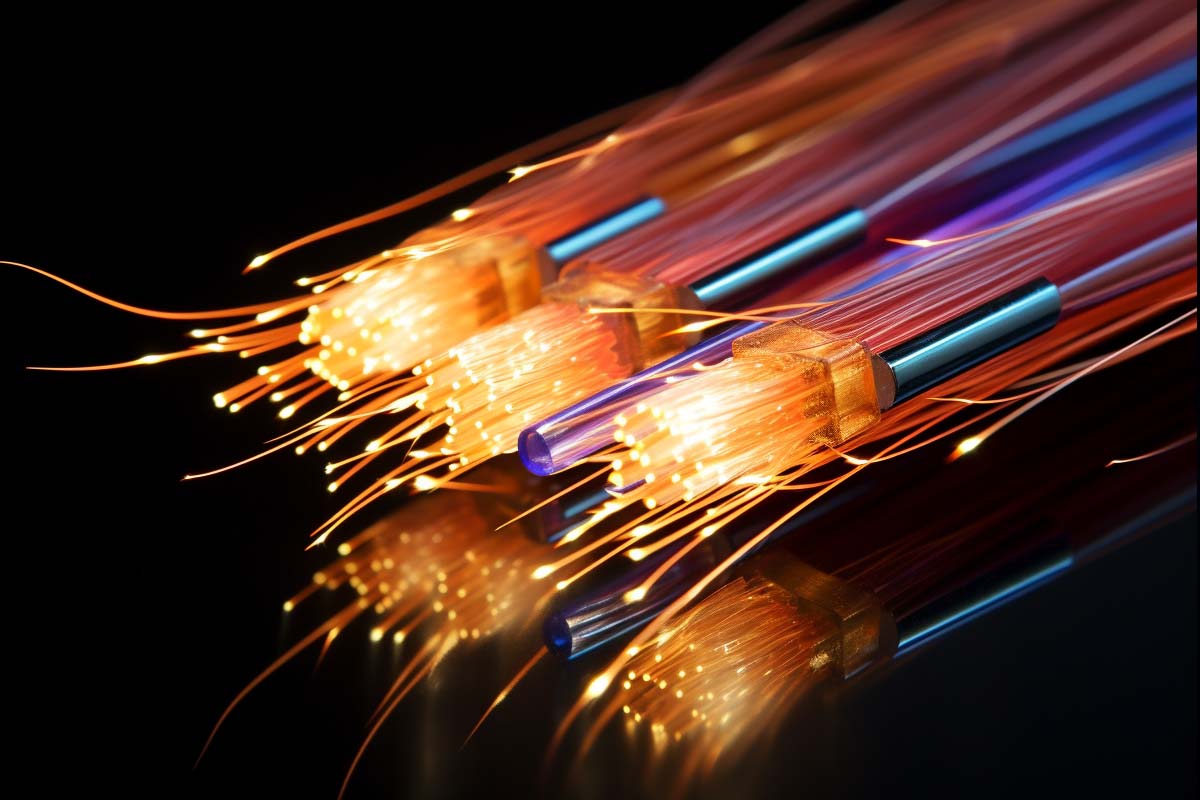What is a Passive Optical Network?
Passive Optical Network (PON) is a telecommunications technology that uses optical fiber to provide virtually unlimited bandwidth, making it a perfect solution for high-speed data services. Unlike traditional copper-based networks, PON doesn’t require any active components to send signals over the fiber. This not only reduces the cost but also minimizes the energy consumption and maintenance requirements, making PON an eco-friendly and cost-effective solution for broadband services.
Components of PON: OLT, ONT/ONU, Splitters
A typical PON system comprises three main components:
- Optical Line Terminal (OLT): The OLT is the starting point of the network, located at the service provider’s facility. It sends data to and receives data from the optical network.
- Optical Network Unit (ONU) or Optical Network Terminal (ONT): These devices are located at the end-user’s premises. They convert the optical signals transmitted via fiber into electrical signals that can be used by end-user devices.
- Splitters: These passive devices divide the optical signal from the OLT into multiple paths to serve multiple ONUs/ONTs, enabling one single feeding fiber to serve multiple homes or businesses.
Network Administrator Career Path
This comprehensive training series is designed to provide both new and experienced network administrators with a robust skillset enabling you to manager current and networks of the future.
Advantages of PON over Traditional Networks
PONs offer several advantages over traditional copper-based network architectures:
- Higher Bandwidth: Optical fiber provides significantly greater bandwidth than copper cables, accommodating the growing demand for data-intensive services.
- Longer Distances: Signals in optical fiber can travel much longer distances without losing strength, reducing the need for signal boosters.
- Greater Reliability: Optical fibers are immune to electromagnetic interference, offering a more stable and reliable connection.
- Scalability: PONs can easily accommodate more users with simple adjustments in the network, making it a future-proof solution.
Deep Dives into PON
Passive Optical Networks (PON) have evolved to meet the increasing demands for higher bandwidth, greater efficiency, and more robust services. Each type of PON has its unique characteristics and is suited for specific applications and requirements. Below, we’ll explore the different types of PONs, focusing on their technical specifications, advantages, and typical use cases.
1. BPON (Broadband PON)
Technical Specifications:
- Based on ATM (Asynchronous Transfer Mode) standards.
- Offers speeds up to 622 Mbps downstream and 155 Mbps upstream.
Advantages:
- BPON provides a good foundation for integrated voice, data, and video services.
- It’s one of the earliest PON standards, setting the stage for more advanced types of PON.
Use Cases:
- Typically used in early fiber-to-the-home (FTTH) deployments.
- Suitable for small-scale, low-bandwidth applications.
2. GPON (Gigabit PON)
Technical Specifications:
- Offers higher bandwidth (up to 2.5 Gbps downstream and 1.25 Gbps upstream).
- Supports triple-play services (voice, data, and video) and high-bandwidth applications.
Advantages:
- Higher bandwidth compared to BPON, supporting a greater number of users and more data-intensive services.
- Efficient encryption and larger split ratios (up to 1:64 or more), meaning one single fiber can serve multiple homes or businesses.
Use Cases:
- Ideal for service providers wanting to deliver a mix of services, including high-speed internet, IPTV, and VoIP.
- Used in both residential and commercial FTTH deployments.
3. EPON (Ethernet PON)
Technical Specifications:
- Based on Ethernet standards, simplifying the integration with existing networks.
- Provides symmetrical speeds of up to 1 Gbps upstream and downstream.
Advantages:
- Simplicity and cost-effectiveness, due to its reliance on standard Ethernet technology.
- Offers a straightforward approach to integrating with existing LANs (Local Area Networks).
Use Cases:
- Commonly used in commercial applications for businesses requiring high-speed data transfer and connectivity between multiple locations.
- Suitable for ISPs (Internet Service Providers) looking for a cost-effective way to deliver high-speed internet services.
4. XG-PON (10 Gigabit PON)
Technical Specifications:
- Provides significantly higher bandwidth (up to 10 Gbps downstream and 2.5 Gbps upstream).
- Designed to meet the demands of bandwidth-intensive applications.
Advantages:
- Greatly increased bandwidth capacity, allowing for more data-intensive services and a larger number of users.
- Forward compatibility, ensuring that networks are ready for future technological advancements.
Use Cases:
- Ideal for service providers that need to deliver ultra-high-speed internet services, 4K video streaming, and other high-bandwidth applications.
- Suitable for backhaul services for cellular networks, especially with the rollout of 5G technology.
5. NG-PON2 (Next-Generation PON 2)
Technical Specifications:
- Offers even higher bandwidth (up to 40 Gbps) by combining different wavelengths in a single fiber through WDM (Wavelength Division Multiplexing).
- Provides flexibility and scalability in both upstream and downstream bandwidth allocation.
Advantages:
- Massive bandwidth capacity, supporting the future-proofing of telecommunications networks.
- Ability to transmit multiple types of services at different speeds over the same fiber infrastructure.
Use Cases:
- Used by large service providers looking to future-proof their networks and provide scalable solutions for an ever-increasing demand for data.
- Ideal for smart cities, large-scale IoT deployments, and areas with extremely high bandwidth requirements.
Understanding these types of PONs helps service providers, network designers, and end-users make informed decisions about deploying fiber-optic networks. Each type has its strengths and is tailored to specific needs, ranging from basic broadband connectivity to ultra-high-speed services and future-ready network infrastructures. As technology advances, we can expect further evolution in PON standards, offering even greater capabilities and efficiencies.
Lock In Our Lowest Price Ever For Only $16.99 Monthly Access
Your career in information technology last for years. Technology changes rapidly. An ITU Online IT Training subscription offers you flexible and affordable IT training. With our IT training at your fingertips, your career opportunities are never ending as you grow your skills.
Plus, start today and get 30 days for only $1.00 with no obligation. Cancel anytime.
Installation and Maintenance Best Practices
- Proper Planning: Before installing a PON, it’s crucial to have a clear understanding of the network requirements and the layout. This includes mapping out the fiber routes and having a plan for every endpoint.
- Use of Quality Components: The quality of optical cables, connectors, and other components can significantly affect the performance of the network.
- Regular Monitoring: Regularly monitor the network’s performance to detect and rectify any issues promptly. Tools like Optical Time Domain Reflectometers (OTDR) can help in identifying faults in the network.
Troubleshooting Common Issues in PON
- Signal Loss: This can be due to bends in fiber cables, dirty connectors, or faulty splitters. Regular inspection and cleaning can mitigate these issues.
- Interference: While optical fiber is less prone to interference than copper, issues like cross-talk can still occur if cables are not properly installed.
- Equipment Failure: Regularly monitoring the network and having a maintenance plan in place can help in quickly addressing equipment failures.
Frequently Asked Questions About Passive Optical Networks
What is the main advantage of using a PON over traditional copper-based networks?
The main advantage of using a PON is its ability to provide significantly higher bandwidth with lower latency, using optical fiber instead of copper cables. This results in faster data transmission speeds, the ability to cover longer distances without signal degradation, and reduced maintenance costs. Additionally, PONs are more energy-efficient and less susceptible to environmental factors like electromagnetic interference, making them a more reliable and sustainable choice for broadband networks.
Can PONs support high-demand services like HD video streaming and online gaming?
Yes, PONs are well-equipped to support high-demand services such as HD video streaming, online gaming, and video conferencing. The high bandwidth capacity of PONs, especially in technologies like GPON (Gigabit PON) and XG-PON (10 Gigabit PON), allows for smooth streaming of high-definition content and lag-free gaming experiences. The low latency and high-speed data transmission also ensure that real-time interactive applications perform optimally over PONs.
What are the main components of a PON, and how do they function?
A PON consists of three main components: the Optical Line Terminal (OLT), the Optical Network Unit (ONU) or Optical Network Terminal (ONT), and optical splitters. The OLT is located at the service provider’s facility and initiates the data transmission. The optical splitters divide the optical signal from the OLT into multiple paths to serve multiple ONUs/ONTs. The ONUs or ONTs are located at the end-users’ premises and convert the optical signals into electrical signals that can be used by end-user devices like computers and televisions.
How does a PON differ from a traditional point-to-point network?
A PON differs from a traditional point-to-point network in its architecture and the way data is transmitted. In a point-to-point network, each end-user has a dedicated line connecting them to the network, resulting in extensive cabling and higher costs. In contrast, a PON uses optical splitters to divide a single optical fiber to serve multiple endpoints, reducing the amount of fiber and equipment needed. This makes PONs more cost-effective and easier to maintain, while still providing high bandwidth and reliable connectivity.
Are PONs secure, and what measures are in place to protect data?
PONs are considered secure networks, but like any network, they require proper security measures to protect against potential threats. PONs use encryption at the physical layer to secure data transmission between the OLT and the ONUs/ONTs. GPON, for instance, uses Advanced Encryption Standard (AES) for data encryption, ensuring that data is protected from eavesdropping. Additionally, service providers implement network security practices, including firewalls, intrusion detection systems, and regular security audits, to further safeguard the network and user data.












